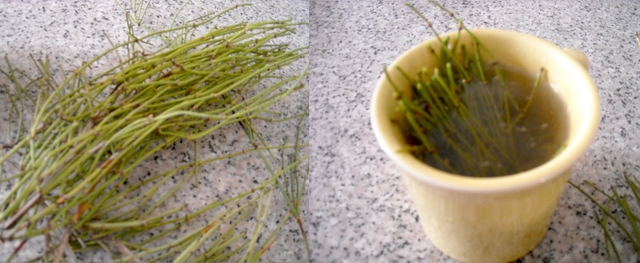
Breaking Brigham: Methamphetamine and Mormon Tea
The other week, we ran a blog post called “Meiji Meth: the Deep History of Illicit Drugs” which also appeared on the website of The Atlantic. A throwaway line in the post noted that the stimulating herb ephedra (which played a crucial role in the original synthesis of methamphetamine in the 1890s) was also enjoyed by Mormons. In a response post on The Juvenile Instructor, a blog about Mormon history, Christopher Jones questioned this claim. The result is, we think, a model of how historical arguments can be conducted online, and as with many good debates, we ended up without a resolution, but with a new set of interesting questions. We’ve decided to run Christopher Jones’s post in full, followed by a summary of the ensuing discussion by the author of the “Meiji Meth” post.
Over at the blog for The Appendix, Benjamin Breen has written a fascinating post on historical discoveries of illicit drugs. Capitalizing on the success of Breaking Bad’s final season (a show centered around the dealings of a cancer-diagnosed high school chemistry teacher-turned-meth cook), Breen notes that while “the invention of Breaking Bad‘s blue meth has become the stuff of television legend” very few people “know the true origin stories of illicit drugs.”
After briefly covering “the first academic paper on cannabis” (penned in 1689 by British scientist Robert Hooke, who noted that “there is no Cause of Fear, tho’ possibly there may be of Laughter”), Freud’s 1884 publication extolling the virtues of cocaine, and “Albert Hoffmann’s accidental discovery of acid,” Breen turns his attention to “the strange fact that methamphetamine was actually invented in 1890s Japan.” In 1893, Nagayoshi Nagai successfully synthesized meth by “isolat[ing] the stimulant ephedrine from Ephedra sinica, a plant long used in Ayurvedic and Chinese medicine.” For those interested in the whole story, I recommend clicking over and reading the entire post—it really is quite fascinating. But one throwaway line caught my attention and will almost certainly interest readers here. Describing ephedrine, Breen notes that it “is a mild stimulant, notable nowadays as an ingredient in shady weight-loss supplements and as one of the few drugs permitted to Mormons.”
Wait, what?
Unfortunately (from a scholarly point of view, that is), it is not true. And the post he links to says as much. But the story behind this is pretty interesting in and of itself. As Brock Cheney, author of Plain but Wholesome: Foodways of the Mormon Pioneers, explains in the February 2009 post linked to by Breen, the conflation of tea made from the ephedra plant with that imbibed by Brigham Young and other Mormon pioneers is a common mistake:
I’ve been chasing after this elusive goal for quite some time, and I have yet to find any primary source (Brigham Young, or otherwise) identifying tea made from the ephedra plant that grows indigenous to Utah. I have found several other primary sources which show that Brigham Young and many other pioneer settlers drank a sort of tea made from herbs and spices, carrying the name of either “composition tea” or “hot pepper tea.” One source called this tea insipid, and another called it the “Mormon Highball.” I have found plenty of references to this tea (and also recipes), but not a single reference to … ephedra[.]
Cheney followed up that post with another a few months later worth reading, and unsurprisingly to anyone who reads Keepapitchinin, Ardis Parshall has also written about the “composition tea” preferred by Brigham Young. I am still left wondering, though, about the history of the name “Mormon Tea” as it applied to the ephedra plant—even the United States Department of Agriculture calls the plant by its nickname. When and where did the connection occur? And why, aside from the fact that the plant is native to the red rock deserts of southern Utah, did it stick?
I’m sure this all comes as something of a disappointment to you Breaking Bad fans who were hoping to enjoy next week’s episode with a hot cup of ephedra tea, but hopefully some of you found this historical footnote interesting, anyway. It’s not everyday that you find Mormons and methamphetamine crossing paths.

A cup of “Mormon tea” brewed from Ephedra nevadensis by the author of the Joshua Observed blog. It was described as “wonderful… like a mixture of black tea and green tea.”
Benjamin Breen responds:
As Christopher Jones and other commenters on the post picked up on, I included the line about Mormon tea as an incidental side note, and didn’t research it until reading this interesting response. As is often the case in historical research, this resulted in many more questions than answers. At a basic factual level, I think that there’s a very strong circumstantial case that Mormon settlers from at least the 1890s and probably earlier were drinking various species of ephedra. As I note in my comments to the original post, there are records that directly link ephedra with “Mormon tea” or “Brigham tea” as early as 1891. Interestingly, the earliest I was able to find also contains an early reference to the stimulant research of the Japanese chemist Nagai Nagayoshi, which would lead to his creation of methamphetamine two years later.
As other commenters pointed out, however, its important to distinguish between the different species of ephedra. While Nagai Nagayoshi was working with Chinese ephedra (E. Sinica or ma huang), a plant whose stimulant effects are said to resemble those of amphetamines, the species native to the American southwest contain different mixtures of stimulating alkaloids and its debatable whether they could actually be thought of as ‘drugs’ in the sense of recreational use. This is a question I find fascinating, however, because its virtually impossible to resolve: the profoundly subjective nature of any psychoactive plant species, from chocolate to hallucinogens, means that any claims about what is or is not a drug are going to be highly mediated by factors like one’s personal brain chemistry, set and setting, and cultural expectations. Early Mormon settlers were seeking a substitute for tea and coffee, which the Word of Wisdom was interpreted as prohibiting. As a result, it seems based on the available evidence that they experimented with a range of native southwestern plants, some psychoactive, some not, but that this usage in the context of a replacement for a prohibited drug (caffeine) put these plants in an institutional religious context that rendered them culturally benign. The cultural and religious context for “drug use” (which I in my own work define extremely broadly, to connote any non-food consumable that alters mind or body, from aspirin to heroin) is often a decisive factor in determining whether something is regarded as a “drug” to begin with by society at large.
A final note, which I found rather fascinating: another commenter notes that Ephedra antisyphilitica (as the Latin name and common names like “whorehouse tea” and “clapweed” imply, a plant used to treat venereal disease) is often the species of ephedra associated with terms like “Brigham-weed” or Mormon tea. The plant was used by local miners to treat gonorrhea and syphilis, she notes, “so the use of the term ‘Mormon’ may have been derisive rather than historical.” Although its impossible to prove at this point, this is an interesting speculation that has a ring of truth to it, in the sense that history is filled with ‘facts’ that are actually the result of misunderstood jokes or mistaken identities. In the end, I’m left with more questions than answers, but I think that’s a good thing.

